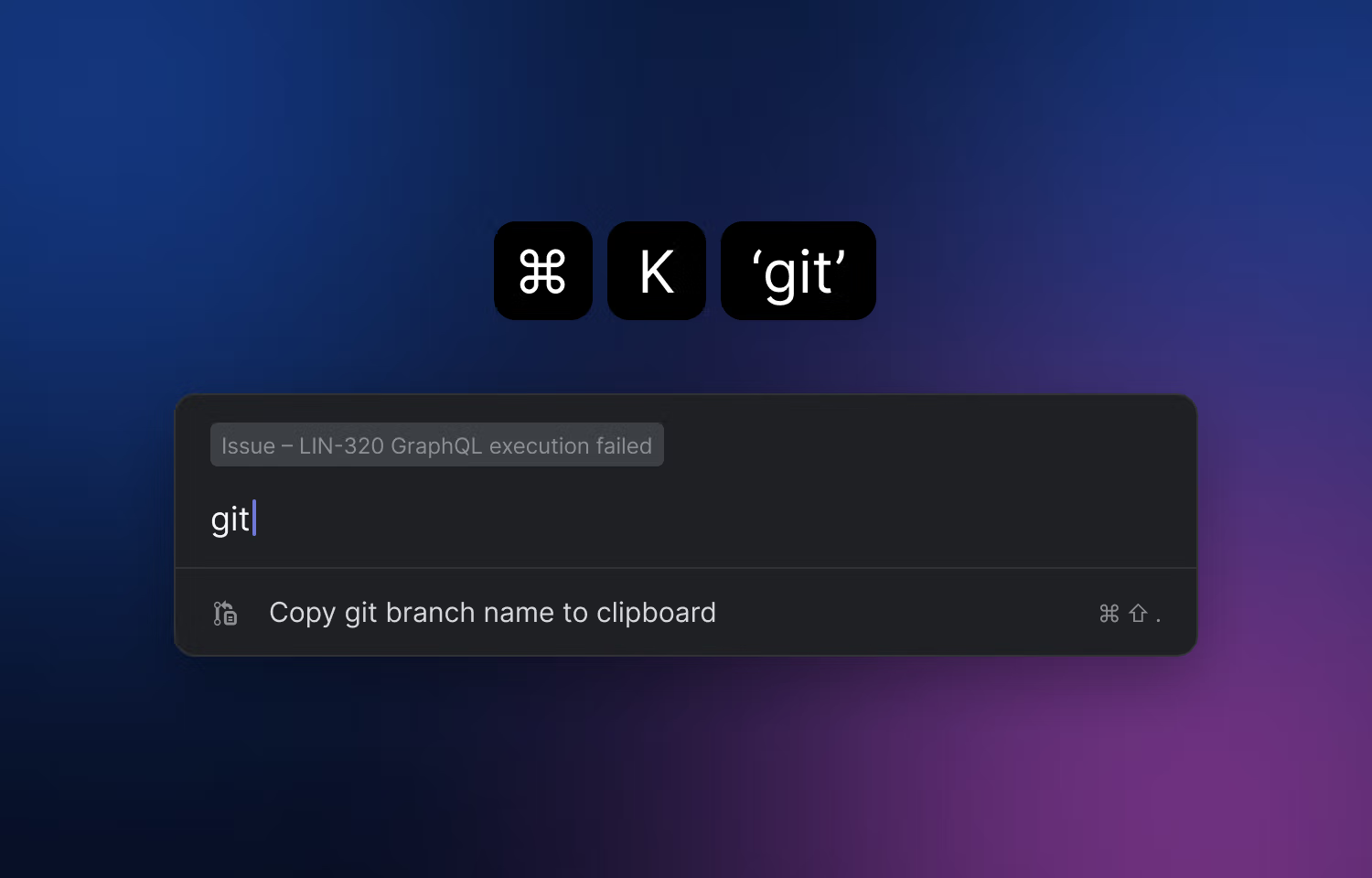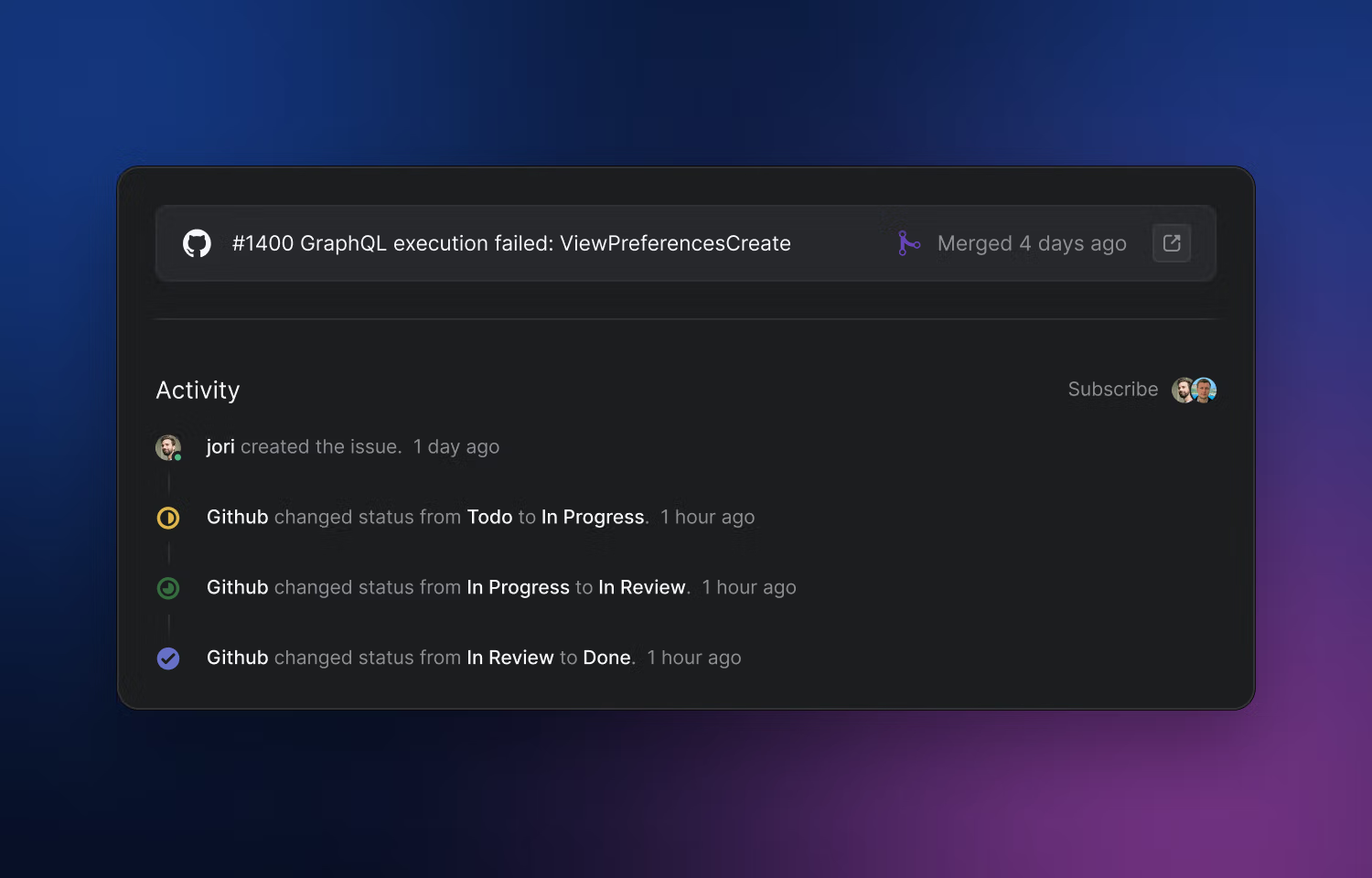- Integrations
- GitHub
Automate your pull request and commit workflows and keep issues synced both ways



Overview
Linear's GitHub integration keeps your work in sync in both applications. It links issues to Pull Requests and commits so that issues update automatically from In Progress to Done as the PR moves from drafted to merged – there is no need to update the issue in Linear at all.
Issues created on GitHub can be synced across to Linear automatically, and comments and other updates are reflected both ways. Move even faster by using a keyboard shortcut that creates the issue's git branch name, assigns the issue and moves the issue to In Progress in one step.
How it works
Configure the GitHub integration in a couple of minutes by authenticating and selecting which repos to connect to Linear. Once you do, anyone in the workspace can start linking PRs and commits.
Link PRs and commits to issues in a few ways. Use the issue ID in the branch name or PR title before creating the PR. To link multiple PRs, or link issues after creating the PR, use magic words along with the issue ID in the PR description or commit message. This will create a link to the PR in the Linear issue and a linkback to Linear from the PR.
Set workflow automations on a per team basis so that issues move through different issue statuses based on PR/commit status. Turn on a couple of account preferences settings to enable personal GitHub automations that auto-assign issues and move them to In Progress.
Connect your chosen repos to sync newly created GitHub issues to your desired teams on Linear — useful for open source projects. Comments, status, assignee and other states are synced both ways between Linear and GitHub.
Configure
A Linear admin can enable this integration for the workspace in settings. GitHub PR linking and linking via commits are enabled separately.
Once enabled, any workspace member can see and configure PR automation under team workflow settings and personal git automations under account preferences. Learn about advanced configuration options to enable autolink or to connect a GitHub Enterprise Cloud account.
GitHub issues can be linked to your repository and Linear team from the GitHub issues section and this will send any new GitHub issues into Linear automatically and already synced.
Self-hosted GitHub Enterprise Server is available as its own integration.